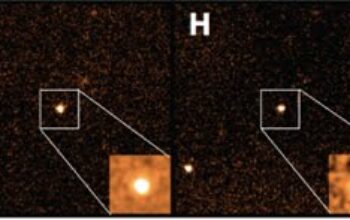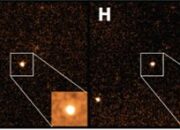In the realm of computational science, the advent of quantum computing heralds a watershed moment, akin to the dawn of electricity in the Industrial Revolution. The overwhelming allure of quantum computers lies in their ostensible ability to vastly outperform classical systems. This raises a penetrating question: why are quantum computers considered faster?
At the heart of the comparison between quantum and classical computing lies the fundamental dichotomy of bits versus qubits. Classical computers utilize bits, binary units of information that exist in one of two states: 0 or 1. In contrast, quantum computers employ quantum bits, or qubits, which leverage the principles of quantum mechanics to exist simultaneously in multiple states. This phenomenon is known as superposition, and it is one of the cornerstones that propels quantum computers into a realm of unprecedented computational potential.
To conceptualize superposition, one might visualize the qubit as a spinning coin. While the coin spins, it is not merely heads or tails; rather, it embodies a probability distribution of both outcomes. This multiplicative computational capacity allows a quantum computer to parse through vast datasets infinitely faster than its classical counterpart, which, like a meticulously methodical librarian, would need to check each book one by one. In this way, superposition acts as a remarkable accelerant in the computational process.
Another pivotal feature of quantum computing is entanglement, a phenomenon in which qubits become interconnected in such a manner that the state of one qubit is inextricably linked to the state of another, regardless of the distance that separates them. This correlation enables an instantaneous transfer of information, creating a complex web of interactions that significantly enhances the system’s processing power. Imagine an orchestra, where each musician is a qubit; once they are perfectly attuned to one another, the resulting symphony reverberates with exquisite harmony and depth, a synergy unattainable in classical systems.
Simultaneously, the concept of quantum parallelism allows quantum computers to explore multiple solutions to a problem at once. Classical computers employ a linear approach, akin to a traveler following a single path through a dense forest, one step at a time. By contrast, quantum computers can traverse many paths simultaneously, effectively creating a vast network of possibilities. This characteristic is particularly advantageous in fields such as cryptography, optimization, and complex simulations, where the sheer volume of potential solutions can be overwhelmingly large.
Moreover, quantum computing excels specifically in algorithms designed to exploit its unique properties. One of the most celebrated among these is Shor’s algorithm, which can factor large numbers exponentially faster than the best-known classical algorithms. This capability poses significant implications for current encryption methods, casting a long shadow over traditional cryptography based on the difficulty of prime factorization. In essence, the very foundation upon which modern digital security is built finds itself precariously challenged by the inexorable advance of quantum-invoked algorithms.
Yet, the tantalizing advantages of quantum computing are not without their own set of challenges. The physical realization of stable qubits, which must maintain coherence without succumbing to decoherence from external influences, remains a formidable technical hurdle. Imagine a carefully balanced acrobat performing on a high wire; a single misstep or gust of wind can lead to catastrophic failure. Thus, ensuring the integrity of qubit states over the necessary timescales for computations is paramount to harnessing their full potential.
Moreover, the quest for error correction in quantum computing necessitates novel approaches distinct from those in classical contexts. Given the fragile nature of entangled states, the implementation of quantum error-correcting codes can be likened to building a robust dam to mitigate the impact of turbulent waters. Progress in this area is critical; without effective error-correcting mechanisms, the promise of quantum computing could dissolve like mist before the sun.
As we venture further into the prospects of quantum computing, it is vital to consider its transformative implications across various domains. From drug discovery to materials science, quantum computing holds the potential to unravel the complexities of molecules and molecular interactions at speeds previously deemed unattainable. Envision conducting thousands of experiments in the timeframe it traditionally takes to perform just one; this accelerates the journey from scientific inquiry to tangible, life-saving applications.
In the grand tapestry of technological advancement, quantum computers represent not merely a faster computational tool, but a profound paradigm shift in our approach to problem-solving. Understanding the multi-faceted accelerants such as superposition and entanglement invites us to reconsider the very nature of computation itself. The qubit, unlike its classical predecessor, is not simply a binary entity but a constituent of a complex, dynamic system that teeters on the brink of revolutionary progress.
In conclusion, the assertion that quantum computers are faster encompasses not only their intrinsic computational capabilities but also their potential to extended scientific boundaries. The complexities of qubit behavior, entanglement, and parallel processing capacities paint a picture of a radically different landscape in computation. As we stand on the precipice of this quantum revolution, the quest for mastery over these enigmatic phenomena continues, promising a future that reconfigures our understanding of what is computationally possible.










